If you’ve eaten some moldy bread, you’re probably wondering when you’re going to feel the effects or if you’ll get sick at all.
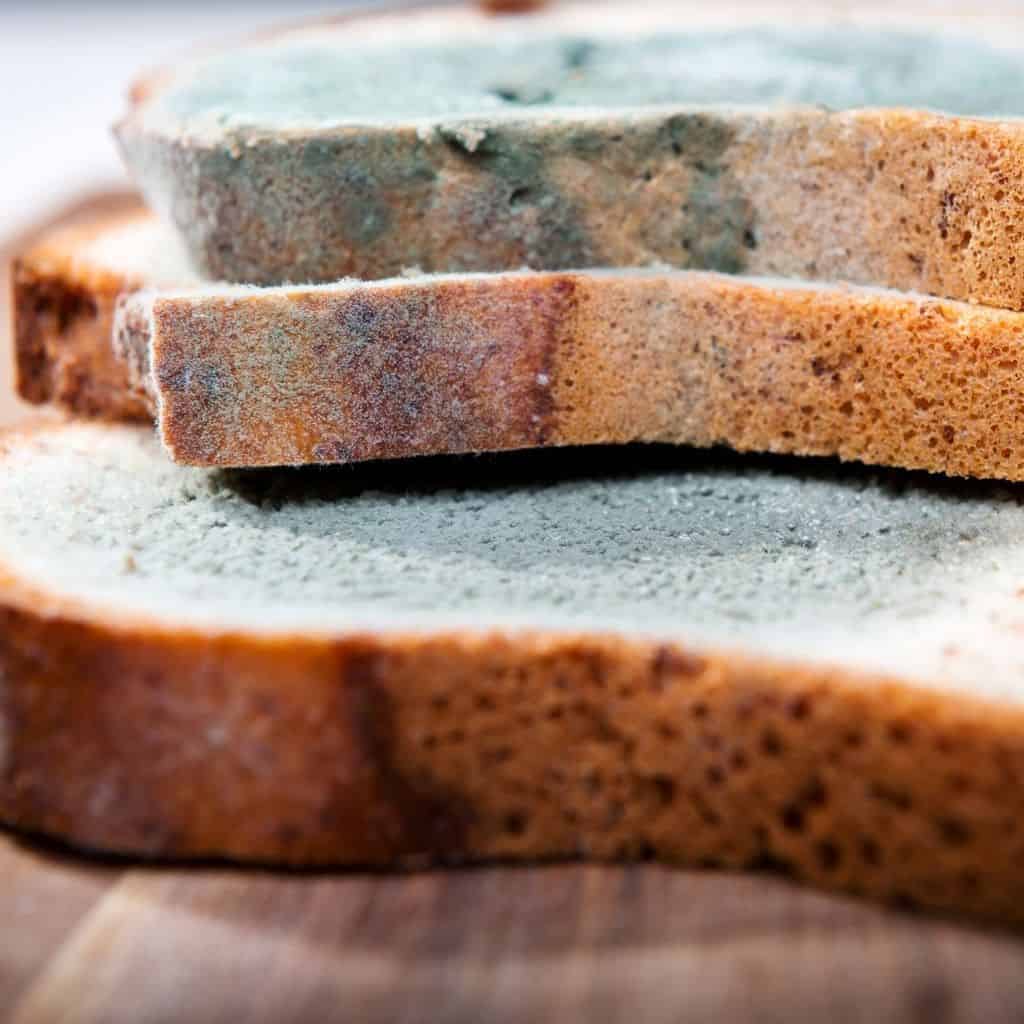
For most people, eating bread with mold does not have alarming effects. However, in some rare cases, it can contain Mycotoxin, toxic chemicals produced by molds. These toxins could cause food poisoning if you ingest too much of them. If this happens, you could see mild to severe symptoms within a few hours. [1]
To get a better idea of molds on bread and how it can affect you, continue reading.
Bread with some slightly fuzzy, green, white, or blue patches is relatively common, especially if it is left uneaten for more than a few days.
Knowing how to handle mold on foods will improve your general food safety. You’ll learn more about what causes it to develop, what to do about it, and how you can keep your bread, bagels, and baguettes fresh for as long as possible.
Does Eating Moldy Bread Always Make You Sick?
Chances are that most people have eaten moldy bread or other foods at least once in their lifetime. You shouldn’t be surprised that you don’t get sick every time this happens. Unless you experience more dangerous types of mold on food or you have an allergy or sensitivity, you probably won’t have any symptoms.
While you shouldn’t eat moldy food in general, having a small amount likely won’t cause any serious harm.
Common Symptoms Of Eating Mold
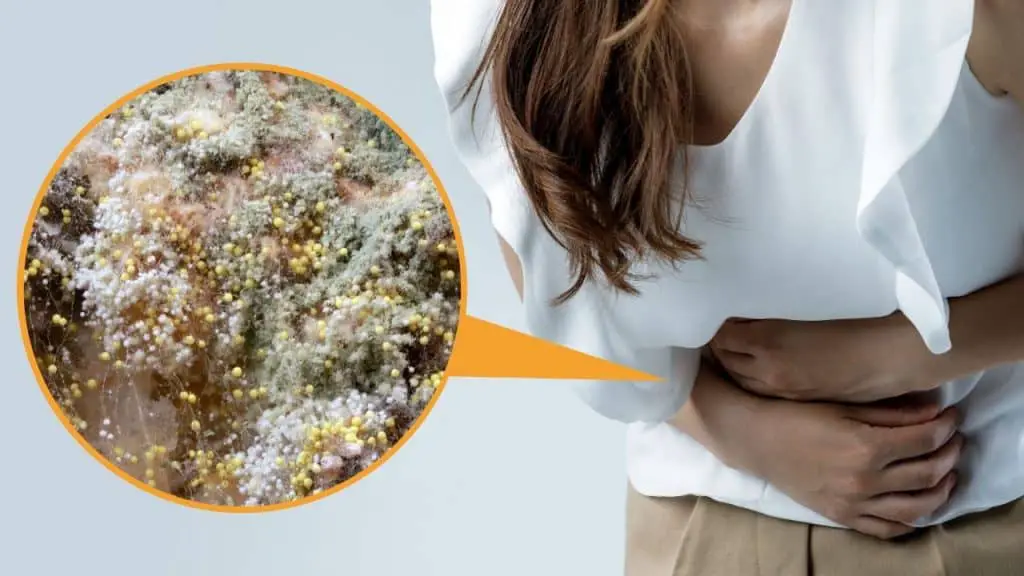
Mild nausea and allergic reactions remain the most common symptoms. These symptoms are usually mild and go away quickly. While it’s rare, you may also develop food poisoning.
Common symptoms of foodborne illness include stomach cramps, fever, diarrhea, chills, diarrhea, weakness, vomiting, headache, and nausea. [2]
If you eat bread that contains some more dangerous types of mold, you may have irritation in your mouth and throat.
Additionally, if you frequently eat moldy food, the long-term effects are not well known. However, certain fungi could produce toxins (mycotoxins) that could cause vomiting, diarrhea, and other more serious problems. [3], [4]
What Is Bread Mold?
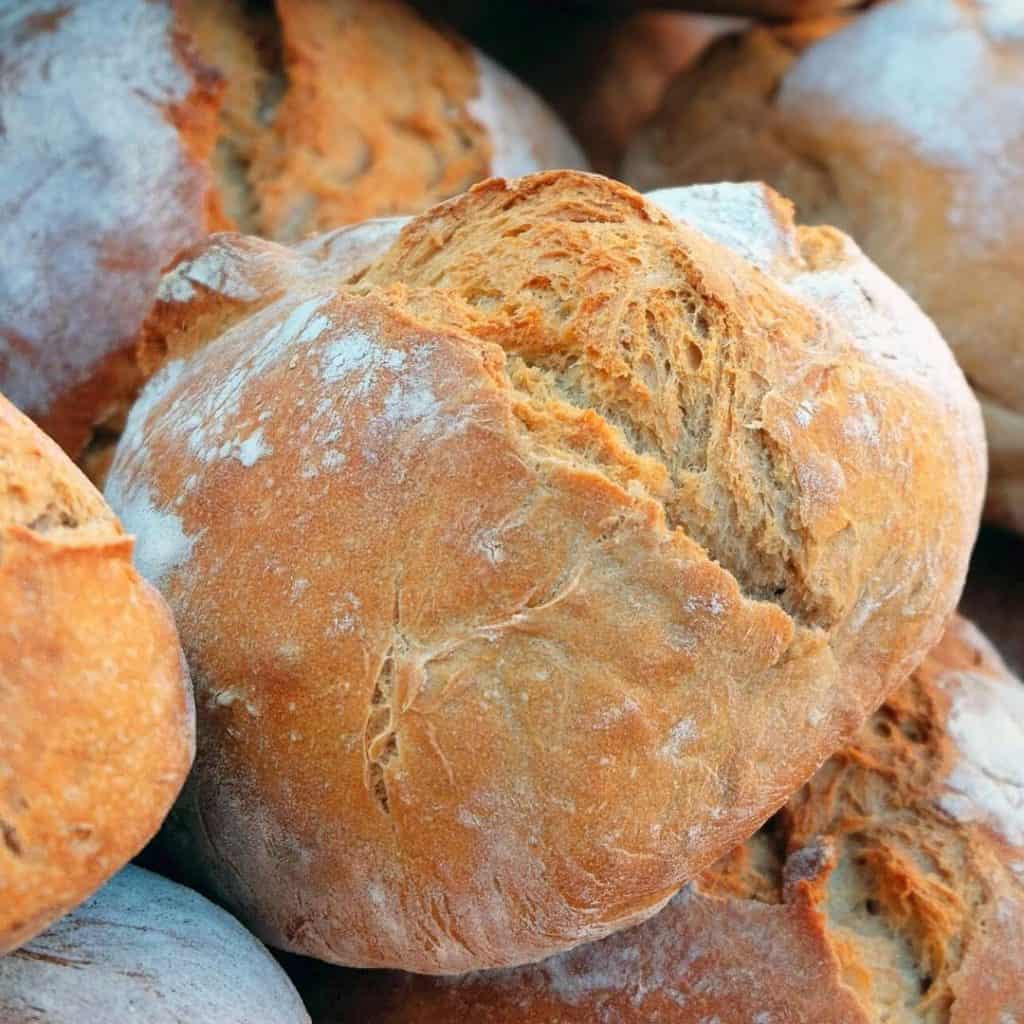
Since bread contains sugar and carbohydrates, molds thrive on its surface. It is a type of fungus that produces spores and feeds on organic matter. There are several types of bread molds, and you may notice more than one type of mold on your loaf. [5]
Different Types Of Bread Mold
Rhizopus Stolonifer
Rhizopus stolonifera is also known as black bread mold. This is the most common type. It may also appear in fruits and vegetables. It will first appear as a fuzzy green or blue patch on a surface. If left alone, the patches will develop a black center. This type of mold is not dangerous but may cause mild indigestion.
Penicillium
Penicillium is actually a group of bread molds, although they are all very similar. This type of mold is used in some cheese products, and some species of it are used to create the antibiotic penicillin.
Penicillium will show up as white, blue, or gray patches. Certain types of Penicillium could produce mycotoxins, which may lead to chronic illnesses over time. The side effects of occasional ingestion tend to be mild.
Cladosporium
Cladosporium is a fungus that is most irritating to anyone with allergies. If you continue to be exposed to Cladosporium, you may have sneezing or wheezing.
Cladosporium appears on the surface of the crust as a dark patch that can be green or black. What makes it noticeable is that it has a strong smell. Unless you have allergies, you likely won’t be harmed by eating it.
How Safe Is It To Eat Moldy Bread?

While it’s never completely safe to eat moldy bread, the risks are fortunately not that high and not that serious in general cases. For those with severe allergies, you can experience more significant health effects, although this is relatively rare.
The greatest danger is with people who frequently eat moldy bread. The toxins produced by mold can increase your risk of developing serious health problems. [6] This is why it’s best to avoid moldy foods in general.
Is It Safe To Eat Expired Bread?
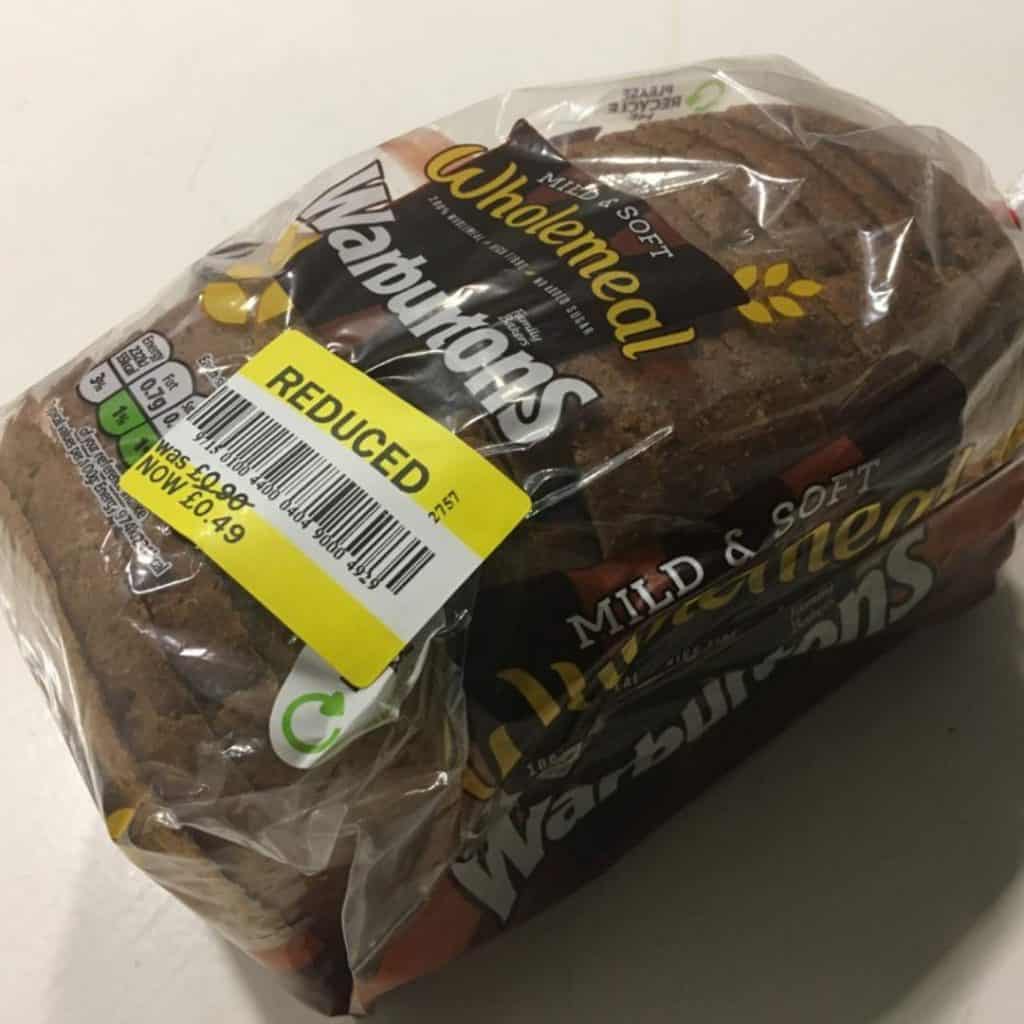
If your bread has expired but does not have mold, you can continue to eat it. The expired loaf may be tough or dry but won’t cause harm. Always inspect the food that has gone past the expiration date to see if it has any mold growth on it.
The bread that has been expired for a few days remains safe to eat if it doesn’t appear to contain any mold.
If it has been expired for longer than two or three days, it may have started to develop some spores, so use caution. If it does not taste right or has an unpleasant odor, but there are no visible white, green, gray, or blue patches, it is still best to throw it away.
If you suspect that there might be some mold, then do not smell it as the spores could be harmful to inhale. [7]
Since most loaves of bread are fairly inexpensive, always throw it away if you’re not sure about its safety.
Can You Eat Moldy Bread If You Toast It First?

Unfortunately, toasting won’t get rid of the mold. Heating foods is a well-known way to get rid of many types of bacteria in foods. However, since mold produces toxins, heating the bread will kill the mold but won’t actually get rid of the toxins. They remain in the food, and there is no way to remove them. When mold is present, the best option is to discard it.
Toasting could actually make the situation even worse. Mold spores could become airborne and not only contaminate your toaster but also other food products in your kitchen. So, do not toast it.
Can I Just Cut Off The Moldy Part?
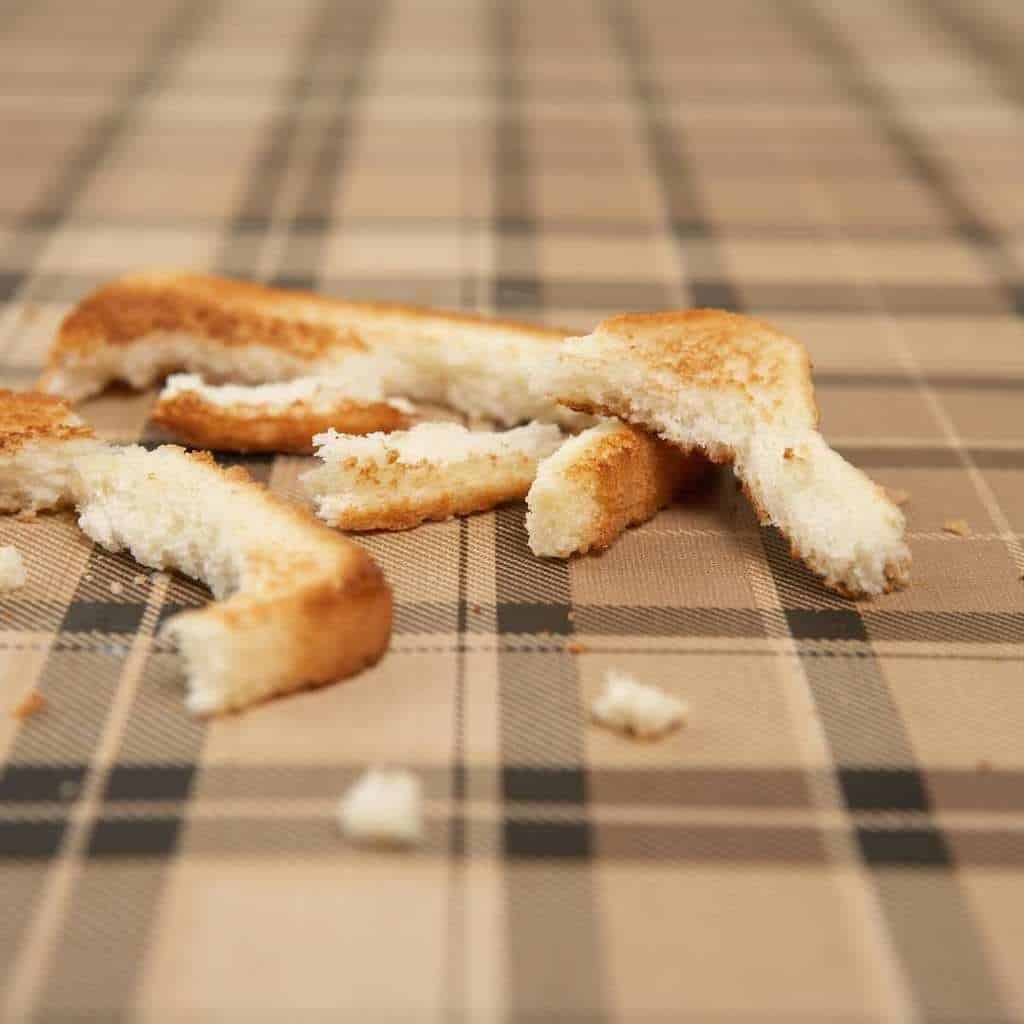
If you notice mold only on one part of the loaf, you may be tempted to cut it off and eat the rest of the loaf.
Since bread is a soft food, it’s easy for the mold’s roots to penetrate deep into the entire loaf.
This means that any mold could have spread throughout the bread but simply can’t be seen. If you notice any signs of mold on it, you are just seeing the tip of the iceberg, so you should get rid of the entire loaf for safety reasons.
How To Tell If Your Loaf Is Spoiled And Inedible?
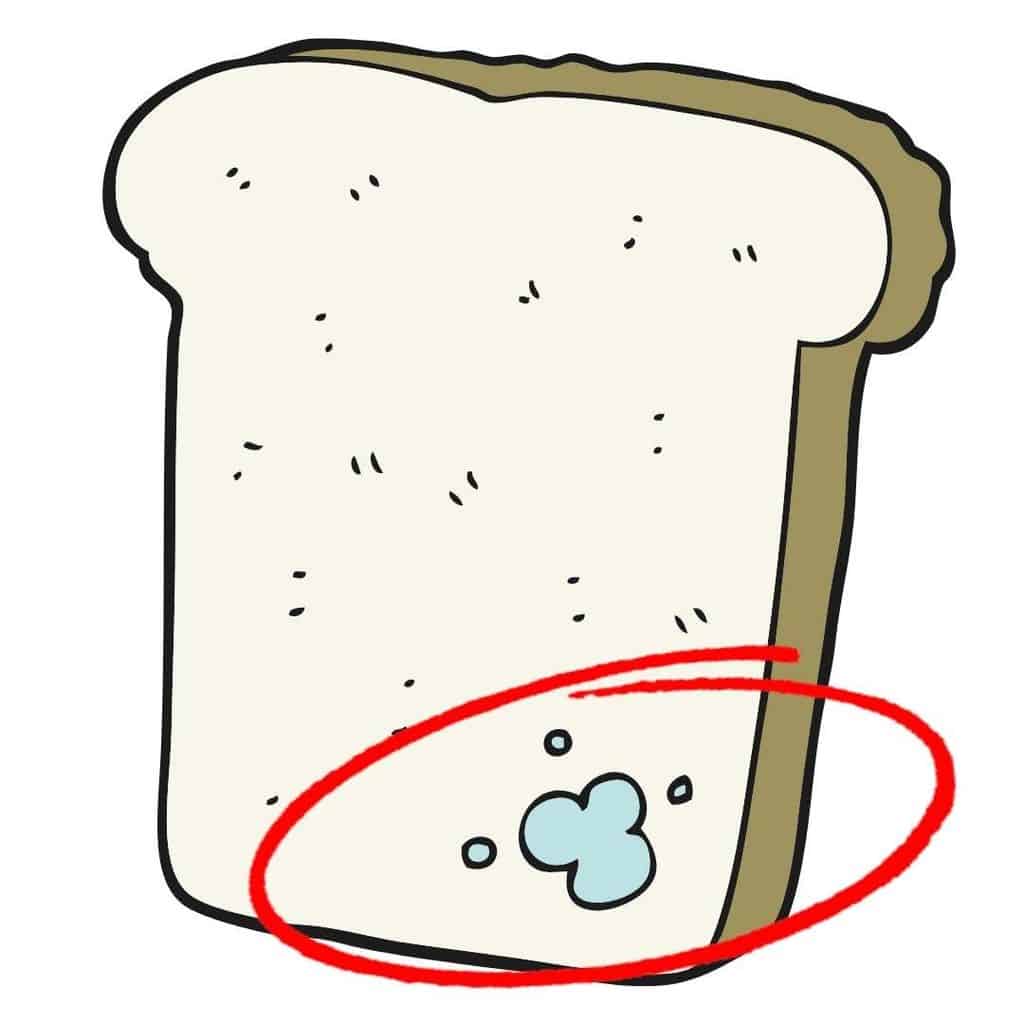
The best way to determine if the bread has mold is through a visual inspection. Take it out of the bag and look at the exterior of it for any unusual spots. They look like small fuzzy patches and may be present anywhere on the surface.
As you cut the loaf, look at the interior as the spores’ growth may have started here.
Also, take note of the smell as some molds have an unpleasant odor. If the loaf or slices look normal and have a normal smell, then it most likely does not contain any mold.
What Causes Fast Molding?
Some types of bread develop mold faster than others due to their moisture content. [8] You may notice that softer pieces of bread tend to mold more quickly than harder ones. Since fungus is a living organism, it relies on organic material as well as water to grow.
Baked goods that have a moderate to high moisture content are going to develop spores growth faster. Additionally, bread that is kept in a warm (77-86 degrees), moist environment will develop mold growth quickly as well.
How To Keep Bread From Molding?
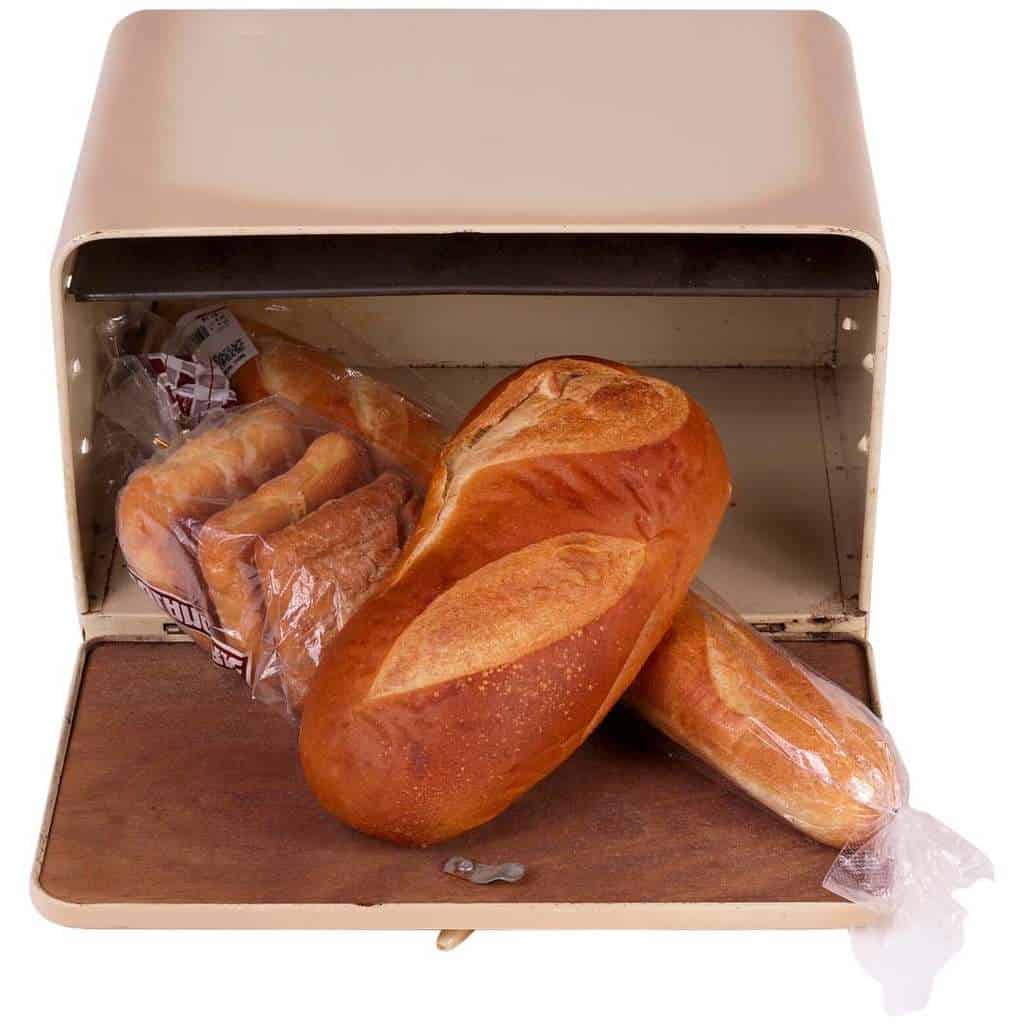
Most slices of bread develop mold if they’re not eaten or thrown away fast enough. It could be as soon as 3-5 days. However, there are a few preventative steps you can take to delay this from happening:
- Keep it dry – if you keep bread inside a package, make sure to avoid getting any moisture in the package. Dry it out as needed before sealing.
- Cover it up – bread can pick up mold spores from the air, so keeping it covered reduces how quickly it will mold.
- Freeze it or put it in the refrigerator – although people don’t always enjoy freezing bread as it can cause dryness, freezing will keep fungus from growing. If you’re not eating it anytime soon, refrigerating it is the best option.
What Should I Do With My Moldy Bread?
Although you should get rid of your bread when it develops mold, you should make sure that it is thrown away safely. The spores in the bread can become airborne and spread in your home. The safest way to throw it away is to wrap it in a bag and put it in a covered trash can.
Also, please DO NOT feed it to your pets.
Can I Use It For Anything Else?

Since many people use old bread to make breadcrumbs or pudding, you might think that you could do something else with bread that has a little bit of mold on it.
Unfortunately, the presence of mold means that you should only throw it away. Keeping even the parts that are not moldy is not your safest option. Any bread that has mold growth should not be used for any other dishes and should be thrown away promptly to prevent any problems.
Can I Compost Bread That Has Mold?
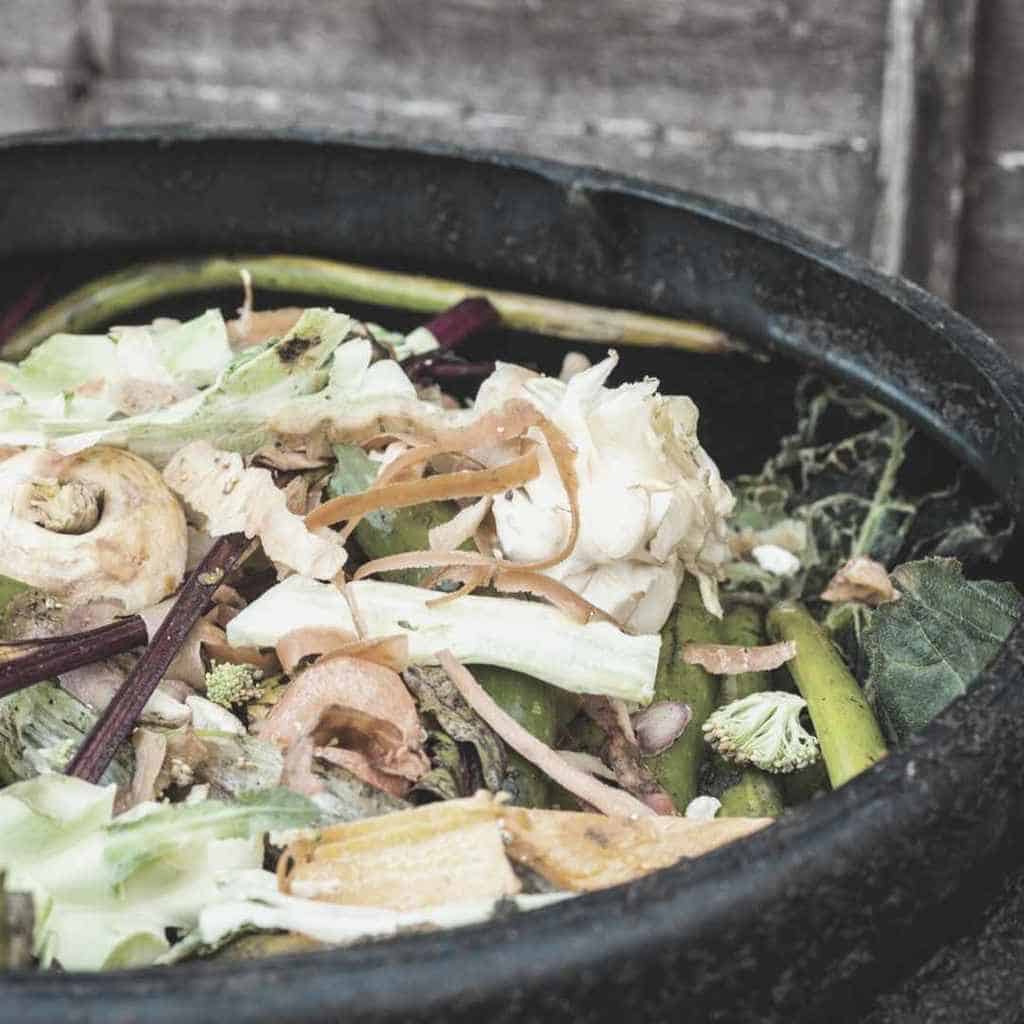
If you like to compost, then you can add moldy bread to the compost pile. If you have an open compost, then you shouldn’t add the bread as the spores may become airborne. However, in a compost pile, the worms and other bugs present will eat the mold fairly quickly, allowing it to break down.
Can I Buy Bread That Is Mold-Resistant?
All bread are going to grow mold at some point, but many loaves contain preservatives like sorbic acid and calcium propionate that makes it more resistant to it. [9] If you buy bread without preservatives, it will likely grow mold faster.
However, most commercial loaves contain compounds that are designed to help prevent the growth of fungi. You should expect the average loaf to stay mold-free for four to seven days.
Also, sourdough bread is shown to have an extended mold-free storage life. It is due to the sourdough production process where bacteria convert the linoleic acid in flour to a powerful antifungal compound. [10]
In addition, some loaves that are vacuum-sealed can last up to a year, but once you have opened the packet, then it should be eaten in a few days. Always check the label for storage instructions and the shelf life after opening.
You can avoid all of the added ingredients and preservatives by making your own.
Homemade bread is fresh, delicious, and also a lot cheaper. Although the bread maker could be quite expensive to buy, after 2-3 months, you will have already got your money back on your equipment.
Read how I calculated the cost of making your own loaf here: How much does it really cost to make bread in a bread machine?
Does Gluten-Free Bread Last Longer?
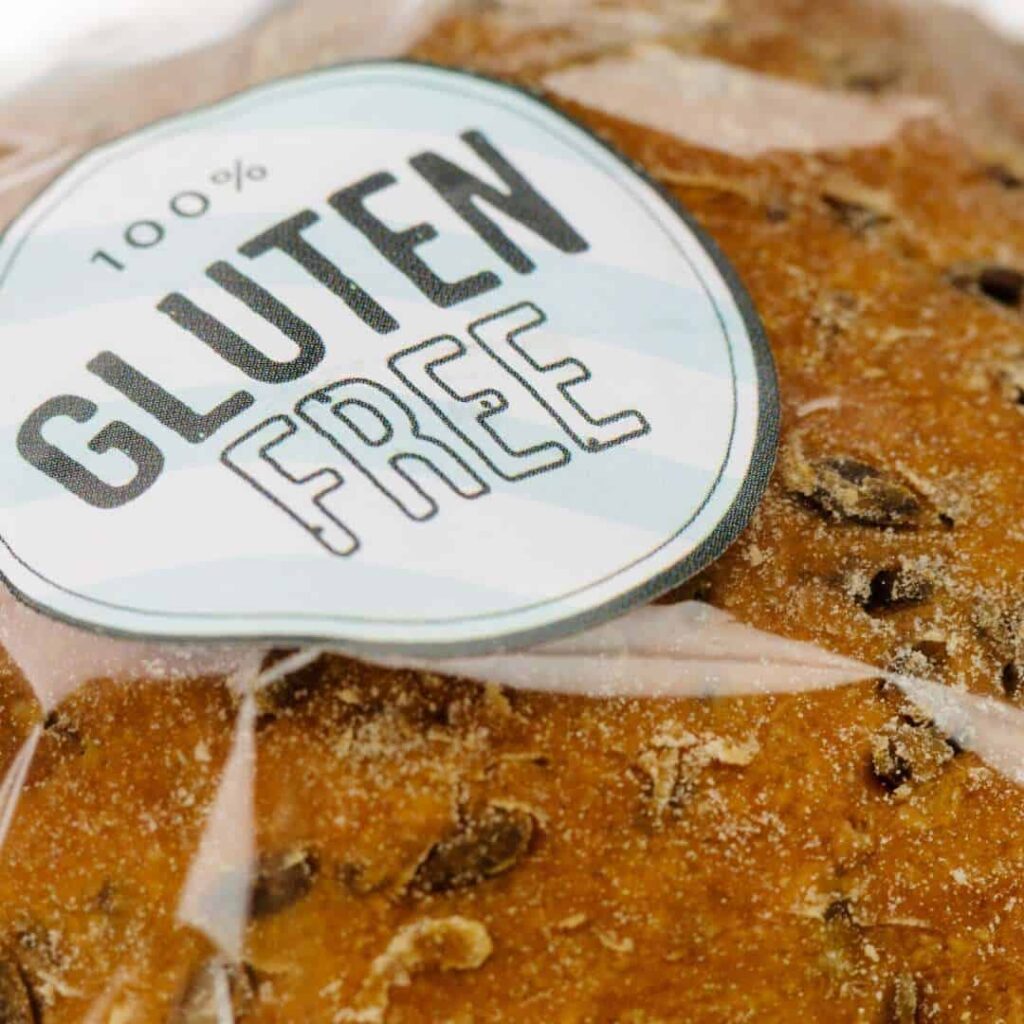
Unfortunately, gluten-free bread is more likely to develop mold. The moisture content of gluten-free bread is typically higher than the standard loaf and makes it more likely to grow mold. Most people who buy gluten-free bread will keep it frozen until they’re ready to use it. Taking this preventative measure will keep it from developing mold.
However, you should try to use it within 2-3 days of defrosting or purchase.
Read Also: Accidentally Ate Rotten Fruit? This Is What Happens…
Can The Spores Spread Throughout My Home?
Although mold can come from a variety of sources, it is likely not going to be caused by the occasional piece of moldy bread that you may have, unless it becomes heavily overgrown. Mold spores are constantly in the air and can cause growth on a variety of surfaces, especially damp ones.
If you have moldy food, you should dispose of it appropriately and clean it in all the areas where it was sitting. If you store your bread in a storage cabinet/box, you may want to clean the cabinet thoroughly, but it’s not likely that this will cause any further problems.
Check out these clever and innovative food storage ideas and don’t let your food ever go to waste again: 20 Unique Food Storage Ideas
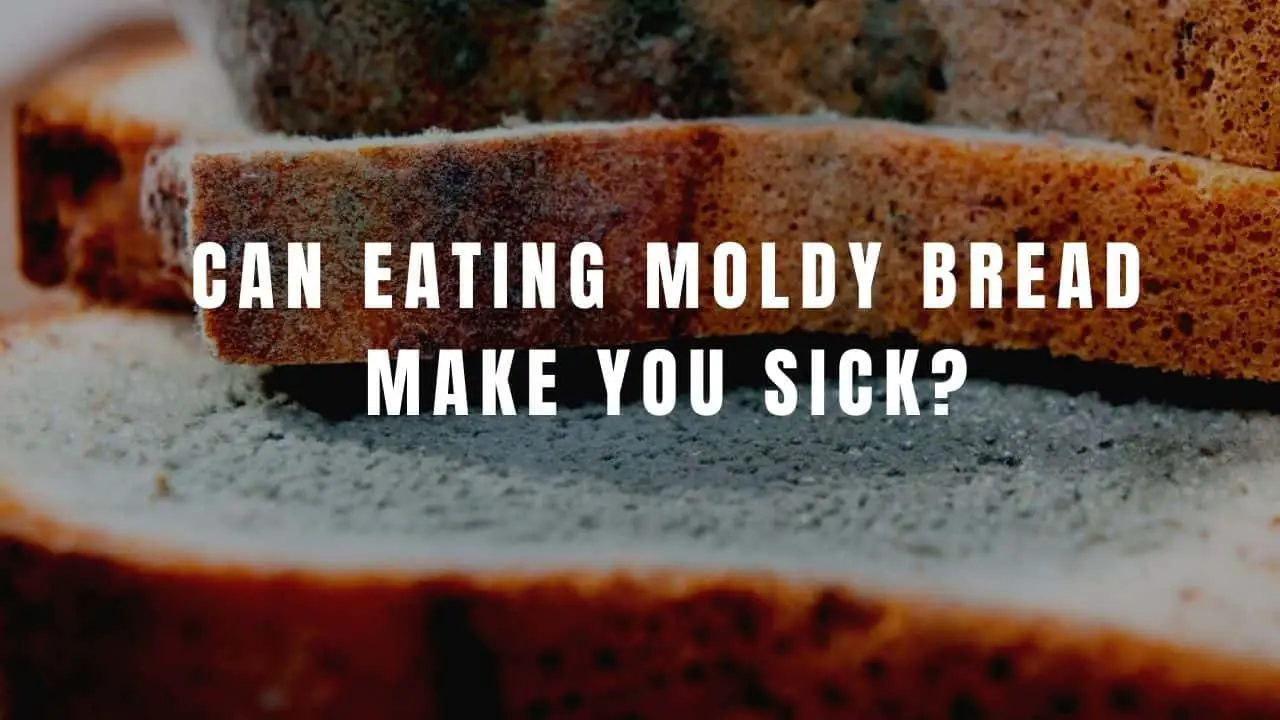
My boyfriend ate some moldy bread once and surprisingly enough he was fine afterward. It turned out the bread had been baking in an oven at just the right temperature to kill off any harmful bacteria, so although it wasn’t very appetizing, it made a surprisingly delicious snack. He vowed never to make that mistake again… though I’m pretty sure he wouldn’t mind if I ever make him something like that again! 🙂
After a while, I started to feel really strange and eventually realized that the bread must have been more than just a bit stale. Sure enough, when I looked closer under the slice, I discovered it was covered in tiny green specks! But surprisingly, the only side-effect that I felt was an incredible urge to pass gas–so much for my fancy dinner!
I was a poor child of the 70s and my mom refused to just throw food out unless it was spoiled. She would cut off the green parts of the crust, and when I saw green on my bread, and try to throw it away, she was like “No, don’t throw that away… that’s penicillin and will keep you healthy.”
Well, even though I’m no longer poor, and green bread is dry and nasty, I still hold to that tradition. I cut off what green I can and toast the rest. Never got sick from it, and have a stomach like an iron drum. Not sensitive to almost any foods. Love my mom!
Oh, you won’t believe what happened to me once! I was so caught up in this book, right, that I didn’t even notice the bread for my sandwich was all moldy. I freaked out when I realized, thinking I was in for it, but guess what? Apart from feeling a bit queasy for a short while, nothing bad happened. Now, every time I grab bread, I have to laugh at myself and make sure I give it a good look over.
Ok, I have a story for you. So there I was, in one of those classic rushes we all find ourselves in, trying to slap together a sandwich because, you know, hunger waits for no one. I grabbed the bread without really giving it a once-over. Fast forward to me chomping down on this sandwich, and something just tasted… weird.
It wasn’t until I looked down at my half-eaten sandwich that I saw it – those unmistakable green spots. Mold. Yep, I’d just eaten moldy bread. Instantly, my stomach started doing somersaults. Not from the mold, I think, but from me freaking out over what I’d just done.
I braced myself for the worst, expecting to be super sick, but… it was just a slight stomachache. Nothing major. In hindsight, I think my body was fine, but my brain was in overdrive, worrying about the ‘what ifs.’
Now, every time I reach for bread, you bet I’m checking it twice. Maybe even three times. Learned that lesson the hard way, but hey, at least it makes for a good story, right?